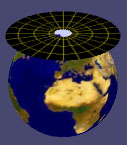
 |
With azimuthal (planar) projections, the spherical (globe) grid is projected onto a flat plane, thus it is also called a plane projection. The poles are the "normal aspect" (the viewpoint or perspective) which results in the simplest projected grid for this family of projections. That is, the plane is normally placed above the north or south pole. Normally only one hemisphere, or a portion of it, is represented on azimuthal projections. When projected from the centre of the globe with the normal aspect, the typical grid appearance for azimuthal projections shows parallels forming concentric circles, while meridians radiate out from the centre. If the imaginary projecting lightsource is inside the globe a gnomonic projection results, if the light is antipodal a stereographic, and if at infinity, an orthographic. |
If you have a VRML-compatible browser installed on your computer, you may want to look at the following 3D virtual model of a cube, made up of six separate gnomonic azimuthal projetcions. If you do not have a plugin capable of rendering Virtual Reality Models, you can download e.g. the Cosmo player or the Viscape player.
General characteristics
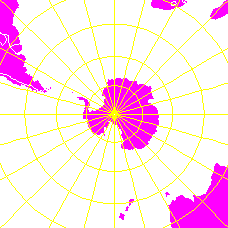 |
Stereographic projection
|
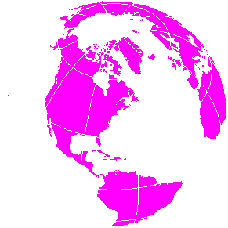 |
Orthographic projection
|
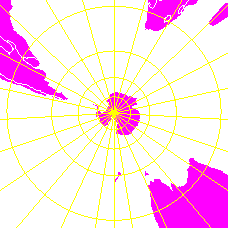 |
Gnomonic projection
|
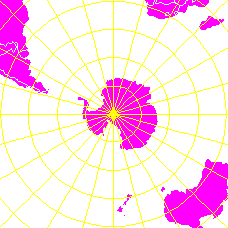 |
Postel azimuthal equidistant projection
|
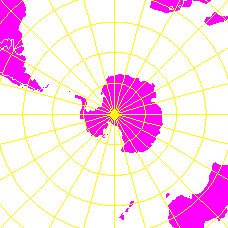 |
Lambert azimuthal equal-area projection
|
Suggestions are welcome
guszlev@ludens.elte.hu